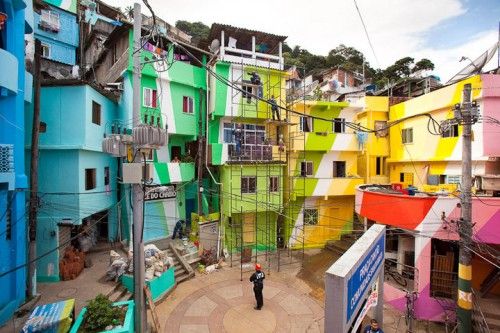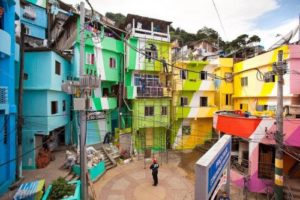After watching Rosado Seijo’s presentation about assisting people in an underdeveloped area with painting their homes, I was reminded of a political science class I took last semester, which focused on methods of establishing action for some of the world’s poorest communities. Seijo’s initiative of painting houses within this neighbourhood may seem like a relatively simple and ineffective undertaking, however, the consequences for the local population would have been significant. I worked at a charter school in Boston, where my mother is a teacher, with Children that have often suffered abuse and been homeless and the activity I spent the majority of my summer assisting with was painting the corridors and ceilings of the school a light shade of blue. While I was initially confused as to how this could have done anything for the children and what the point in it was – I thereafter realised how much of a genuine difference such seemingly insignificant actions could make. The reasoning behind that specific shade of blue was that it was clinically proven to lower stress rates among children. This was aimed at providing a visibly safe atmosphere for those children that had suffered abuse due to its more neutral nature than plain white (which was what originally lined the corridors prior to the light blue).
This relates to what Rosado Seijo undertook in this project / video lecture as I believe that this is analogous to what he was attempting to achieve in this poor and violent favela. In having a standard, energetic colour across groups of homes situated next to eachother, he is striving to create “unity” and a sense of belonging and in turn comfort for its residents.
What may have initially seemed to be an insignificant project has actually opened my eyes to the power of art and activism in communities across the face of the planet.


